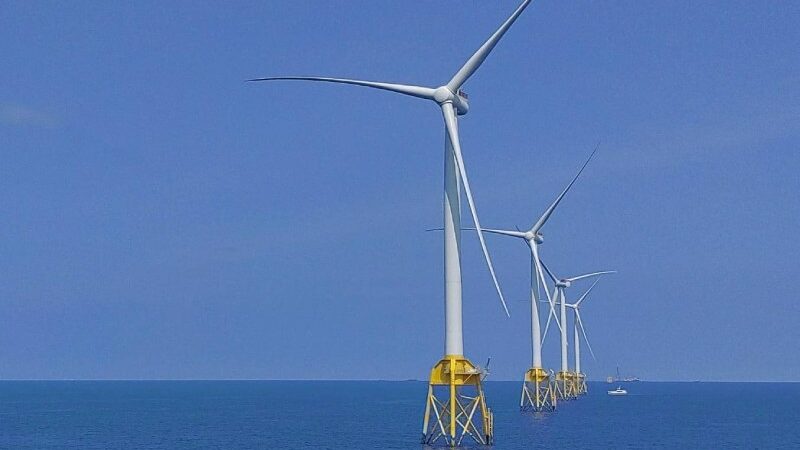U.S. gas costs flood to unequaled high as oil costs rises

American drivers are presently paying the most they’ve ever given out for gas, with the public normal arriving at an untouched record of $4.17 per gallon, as indicated.
As the world barrels into Year Three of the pandemic, Americans are entering another period of monetary uneasiness – a certain reality that yells out at them in huge striking numbers on endless signs dabbing the country’s side of the road.
Oil costs flooded to a 14-year high, while fuel costs hopped past $4 a gallon to approach a public record, as the U.S. what’s more, its partners examine possible limitations on the acquisition of oil from Russia after the nation attacked Ukraine.
The record comes after the normal cost for gas bested $4 a gallon last week, with costs proceeding to flood in the midst of Russia’s conflict on Ukraine. The past untouched high for U.S. gas costs was $4.10 in July 2008, as indicated by Bloomberg (Adjusted for expansion, that stays the high at fuel costs.)
Record gas costs have arrived, similarly as many individuals are delineating summer travels or getting back to the workplace without precedent for two years. That could make an especially persistent issue for strategy producers as expansion douses into the texture of American life. Despite the fact that gas represents a moderately little part of customers’ general spending, those costs support a more extensive feeling of agony that could at last control spending.
Russian oil has up until this point been saved Western authorizations, straightforwardly, with an end goal to limit financial aftermath in the U.S. also, Europe.
However, the possibility of that changing momentarily sent the cost of Brent raw petroleum, the worldwide benchmark, above $130 per barrel, its most noteworthy starting around 2008. Brent was exchanging at around $124 a barrel in late morning exchange.
Drivers in California are confronting the greatest expenses, with the normal cost per gallon at $5.44. In Mono County in California, the ordinary expense of gas has hopped above $6, with the normal cost at the siphon now at $6.02, AAA said.
The normal cost for a gallon of ordinary gas on Monday hit $4.17 – a record-breaking high, breaking the past record of $4.11 a gallon that had remained since July 2008. Costs were at that point raised in view of supply deficiencies before Russia attacked Ukraine fourteen days prior, yet costs have spiked as the oil business has avoided Russian unrefined.
“We are presently conversing with our European accomplices and partners to examine an organized way at the possibility of prohibiting the import of Russian oil,” Secretary of State Antony Blinken told CNN on Sunday. “That is an exceptionally dynamic conversation at this very moment.”
Why is gas so costly?
U.S. gas costs, which tumbled to a normal of $1.94 per gallon in April of 2020 as the COVID-19 pandemic was grabbing hold, began rising pointedly in the fall of that year as the U.S. economy bounced back and request flooded. By December of 2021, gas had leaped to $3.40, while the fiercest expansion in forty years pushed up the expense of everything from food to lease.
“You could purchase an alternate sort of vehicle or thought of various transportation choices, however in the short run, you’re only sort of stayed with the gas costs,” says Carola Binder, an academic administrator of financial aspects at Haverford College. “It’s simply going to mean you have less to spend on different things.”
The spike in energy costs comes as buyers in the U.S. are confronting the most noteworthy expansion in many years. Fuel costs had effectively been rising strongly before Russia’s attack of Ukraine, as request bounced back from a droop right off the bat in the pandemic and supplies were delayed to make up for lost time.
This year, oil and gas costs kept on moving after Russia massed troops on the Ukraine line. Costs detonated higher after Russia sent off a significant intrusion on February 24 in the midst of worries that the contention could upset worldwide rough supplies and trigger financial assents.
It is not yet clear whether gas cost floods are influencing purchaser spending. February’s buyer cost file, a critical proportion of expansion, will be delivered in the not so distant future, however it will not mirror the latest spikes because of Russian animosity. In any case, one record, delivered by the London-based ICE Benchmark Administration, showed Americans’ entire year expansion assumptions are ascending because of the attack of Ukraine. As of Monday, the normal speed of buyer cost increments over the course of the following year rose to over 5% contrasted and 3.5% toward the beginning of February.
Be that as it may, cost increments have sped up since Russia attacked Ukraine toward the end of last month.
Gas costs have hopped by 45 pennies a gallon somewhat recently, to a public normal of $4.06, as per news. That is inside a nickel of the untouched high of in 2008.
“The tactical struggle among Russia and Ukraine has driven up unrefined petroleum costs in the course of the most recent seven days by more than 30%,” investigators with venture bank UBS said in a report. “This is the second-biggest one-week expansion in unrefined petroleum throughout the most recent 30 years, driven by fears of a likely ban of Russian oil supplies, which would have wide-running ramifications for oil makers, customers and markets.”
Adding to the stockpile requirements, President Joe Biden reported the United States would boycott Russian oil imports Tuesday, an emotional acceleration of assents pointed toward rebuffing Vladimir Putin’s system that could additionally agitate worldwide items markets. Albeit the United States consumes minimal Russian oil, the move raises the chance of European countries – Russia’s essential oil market – taking cues from Biden.
Diesel fuel costs bounced considerably more quickly, to a public normal of $4.61 per gallon.
“I seen diesel last week for $4.79 and it was a sticker shock without a doubt,” said Monte Wiederhold, a free driver situated in Lebanon, Ohio. He regularly purchases 170 to 200 gallons all at once, and said he must raise as far as possible on his fuel card.
Wiederhold has a fuel charge incorporated into his shipping rate, which is refreshed week after week. Be that as it may, with costs taking off in excess of 60 pennies a gallon somewhat recently, it’s difficult to keep up.
President Biden on Tuesday declared a U.S. restriction on Russian oil and gas imports over the country’s intrusion of Ukraine, training in on Russian President Vladimir Putin’s primary income source as Russian powers keep on battering Ukrainian urban areas. Brent raw petroleum, the benchmark at oil costs, bounced on Tuesday around 5% to more than $129 a barrel.
“The choice today isn’t without cost here at home,” he said. “Putin’s conflict is as of now harming American families at the service station. With this activity will go up further.”
With regards to expansion, brain research matters. Assuming buyers anticipate that costs should rise, they spend more in the close to term, which feeds request, which pushes costs up further – a cycle that can be hard to break, particularly when the wellspring of the cost spikes is standing out as truly newsworthy day by day.
Oil costs could acquire significantly more
How much higher energy costs could climb relies upon what structure any assents take and what unexpected supplies become accessible to supplant any lost commodities from Russia.
The U.S. could basically decline to purchase oil from Russia, yet assuming that different nations keep on buying it, there would be little impact on worldwide supplies and up strain on costs would be restricted.
Russia is a significant exporter of unrefined petroleum, representing around 12% of the world’s stockpile. Any disturbance to those commodities is probably going to drive costs at the siphon higher for customers all over, specialists said.
However the U.S. is definitely less subject to Russian oil than Europe. Last year, around 8% of U.S. oil imports came from Russia, while as of January basically no Russian oil came into the U.S, as per Troy Vincent, senior market expert at DTN, a products research firm.
“Now and again individuals don’t actually have any idea why gas costs are rising, yet this time individuals know that this is a result of this conflict,” Binder says. “The restriction on Russian oil imports is significant and just, and ideally a great many people will see that it merits the greater cost at the siphon.”
Be that as it may, if the U.S. also, its partners act in show to limit Russian commodities, worldwide costs could move higher. Russia at present supplies around 7% of the world’s oil and other oil items, sending out exactly 7 million barrels every day.
U.S. authorities have likewise apparently opened consults with Venezuela about loosening up limits on that nation’s oil trades. Assuming continuous discussions pointed toward restoring the Iran atomic arrangement are effective, that could likewise give a lift to worldwide oil supplies.
When will gas costs fall?
The cost of gas could decline not long from now, as indicated by David Kelly, boss worldwide tactician at JPMorgan Funds in an exploration note. That would rely upon more noteworthy U.S. shale oil creation and more noteworthy result from OPEC individuals, among different turns of events, he noted.
The gas cost flood feels like the start of a bleak third part in the pandemic period: 2020 brought the dangerous infection; 2021 the staggering monetary post-quake tremors; and 2022 imprints the beginning of Europe’s biggest ground battle since WWII, which is intensifying the agony created by the emergencies paving the way to it.
Rising costs may likewise help homegrown creation of oil. Government forecasters anticipate U.S. oil organizations to create 12 million barrels each day this year, up from 11.2 million barrels each day in 2021.
Meanwhile, U.S. families are probably going to feel the hit to their wallets. The normal U.S. family burned through $3,100 on gas in 2021, as indicated by Yardeni Research. In any case, the new spike in gas could wind up costing Americans as much as $2,000 more this year, the speculation research firm assessed in a report.
The conflict in Ukraine has additionally added to an ascent in grain costs, as both Ukraine and Russia are significant providers of corn and wheat. That could add to cost increments at the general store. Rising grain costs are a specific worry in the creating scene, where individuals are intensely reliant upon imported food supplies.
Disclaimer: The views, suggestions, and opinions expressed here are the sole responsibility of the experts. No THE CASH WORLD journalist was involved in the writing and production of this article.






